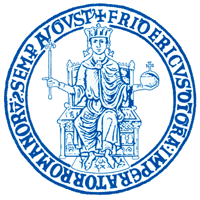Location
The University of Naples Federico II (Italian: Università degli Studi di Napoli Federico II) is a university located in Naples, Italy. Founded in 1224 it is the oldest public non-religious university in the world, and is now organized in 13 faculties. It was Europe's first university dedicated to training secular administrative staff, and one of the oldest academic institutions in continuous operation. Federico II is the third University in Italy by number of students enrolled, despite its huge dimensions it still represents one of the best Universities in Italy being an excellence in particular for research; in 2015 it was ranked among the first 100 universities in the world by citations per paper.] As of 2016 it is the only generalist Italian university in the Times higher education reputation, which considers the best 200 best universities in the world. The university is named after its founder Frederick II. From October 2016 the University hosts the first ever Apple IOS Developer Academy.
Source: Wikipedia (consulted d.d. February 21st 2018)
Members:
Resources
Displaying 1 - 5 of 56Metropolitan Governance for Territorial Cohesion
This paper proposes and defines new metropolitan governance strategies for territorial cohesion between inland and urban areas. Different reflections are here presented to comprehend how is it possible to implement cities’ ability to understand and manage metropolitan dynamics. In Europe, urbanisation and land abandonment is a widespread phenomenon compared to many other parts of the world. According to research carried out by the European Union it is estimated that four out of five European citizens will be living in urban areas abandoning villages and rural areas.
The distribution of public services from the perspective of sustainable spatial equality in the Tabriz Metropolitan in Iran
One of the most prominent consequences of rapid urbanization has recently been the disintegrated distribution of municipal services which predisposes inequality in citizens' benefiting from these services. Therefore, the city planners and managers' main goal must be to achieve the ideal of 'equality of opportunities' to help different groups of urban population have access to public services and eliminate conflicts in the provision of opportunities.
Modelling the Shifts in Activity Centres along the Subway Stations. The Case Study of Metropolitan Tehran
Activity centers are areas of strong development of a particular activity, such as residence, employment, or services. Understanding the subway system impacts on the type, combination, distribution and totally the development of basic activities in these centers, have an important role in managing development opportunities created along the Tehran subway lines. The multi criteria and fuzzy nature of evaluating the activity centers development make the issue as complex as cannot be addressed with conventional logical systems.
Challenges of Transit Oriented Development (TOD) in Iran. The Need for a Paradigm Shift
Transit oriented development (TOD) has gained popularity as a means to address urbanizations problems such as traffic congestion, air pollution and affordable housing strategies. It simply refers to integration of urban development and public transportation facilities, together with some other characteristics such as “intensified land uses near TOD stations”, “landownership and car-ownership variety”, mixed use, “lower car dependency”, compact form, mass transit stations, open spaces, walkability, etc.
Modeling metro users' travel behavior in Tehran: Frequency of Use
Transit-oriented development (TOD), as a sustainable supporting strategy, emphasizes the improvement of public transportation coverage and quality, land use density and diversity of around public transportation stations and priority of walking and cycling at station areas. Traffic, environmental and economic problems arising from high growth of personal car, inappropriate distribution of land use, and car-orientation of metropolitan area, necessitate adoption of TOD. In recent years, more researches on urban development and transportation have focused on this strategy.


